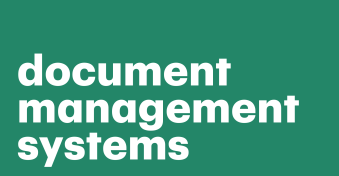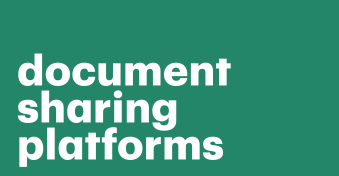A data room is a secure platform to house your business’s sensitive and confidential documents and files.
Often used in business transactions like mergers and acquisitions and legal proceedings, it’s an online cloud solution that you can access remotely from anywhere with an internet connection.
But how to set up a data room?
We’re going to cover the steps you need to learn together with some best practices, so you can make the most of your business data.
Why do you need a data room?
As well as being useful to any organization that values secure, collaborative document sharing, a data room is essential for businesses handling mergers and acquisitions.
During the due diligence process, companies need to share confidential information with potential buyers and/or investors.
By having a data room in place, you provide a secure platform for sharing this sensitive data, which ensures that only authorized parties have access to it.
Other reasons for using a data room can be for board members of a company, who require access to sensitive information for decision-making purposes or for businesses that need to prove regulatory compliance, such as those in finance and healthcare.
A data room provides easy collaboration opportunities for companies of all types and sizes.
You can access it from anywhere, at any time, and on any device, so your team members can easily work on projects and complete transactions together.
Implementing a data room eliminates the need for physical document storage, printing, and courier services, helping your business reduce the costs associated with document management.
Who uses a data room, and why is it important?
There are many use cases and business needs for a data room — in fact, pretty much all businesses can benefit from one.
A data room for startups can be especially helpful, as the structure helps new businesses organize data properly from day one.
Because data rooms enable businesses to store, categorize, organize, share, and extract value from their data, there’s a use case for all industries.
One example is using data rooms for sales purposes.
Data rooms are ideal for organizations that need to produce regular and accurate forecasts by harnessing the most up-to-date information.
You can get more work done in less time by gaining instant access to workflows and data to keep docs moving fast.
This enables your sales teams to focus on generating pipeline leads rather than wasting time on data entry.
For example, data rooms can drive your sales team’s efficiencies forward by reducing the time it takes to prepare and close deals, equaling happier working relationships with clients.
By remaining well-organized and up-to-date with current deals, you can minimize customer attrition and accelerate the sales process for your entire organization.
Companies that might use a data room include those who deal with:
Intellectual property
Intellectual property, such as patents, trademarks, and copyrights, and need to protect these assets from unauthorized access.
A data room can provide a secure platform for storing and sharing with external parties.
Joint ventures
When entering into a joint venture with another company, it’s often necessary to share confidential information about your respective businesses.
Product development
During the product development process, there’s a need to share sensitive information, like design specifications, product plans, and marketing strategies, with external partners.
Charities and not-for-profits
These organizations may need to store and share confidential data, such as donor information, financial records, and legal documents.
Insurance claims
Medical records, police reports, and financial information are commonplace types of data that are shared during active insurance claims.
Tips and best practices for setting up a data room
Over 60% of all corporate data is stored in the cloud — a figure that’s on the rise.
Ergo, choosing a data room to securely house your organization’s sensitive information is a wise decision.
So, let’s go through some tips on the best way to set up your data room:
1. Choose the best data room software
A necessary first step is to select the best data room software to suit your organization and its needs.
Ensure that you carry out due diligence and evaluate your team’s feature requirements and integration and user experience needs.
This way, you can assess the software solutions objectively and find the ideal option.
During your software search, look for data room features like:
- Feature sets. Explore features such as custom branding, drag-and-drop file upload, third-party integrations, compliance tracking, customizable templates, document classification, and more.
- Ease of use. Data room software should be convenient, intuitive, and simple for your team to set up and use.
- Data analytics and reporting. It’s important to understand how your data room is accessed. A solution like PandaDoc grants access to comprehensive document analytics from within your data room.
- Your user base. Decide on the number of users for your data room, and then check if your software solution can accommodate them all.
- Price. Cloud-based data room software is typically based on a subscription pricing model, making it more affordable as a recurring operating expense than a large capital expense.
- Security. Robust security features are essential to ensure your data is securely stored and impenetrable to outsiders.
Be sure to compare multiple software options by trialing various demos.
Most data room software providers will offer free trials so you can check they’re right for your business before investing.
2. Identify your data room structure
Next, you must identify the structure of your data room.
Data rooms typically organize data into folders, which you can “nest” to create a hierarchical structure.
Use folders to group related documents together and make it easier for users to find the information they need.
Another option for structuring is indexing.
This tags documents with keywords or metadata that enable users to locate files using certain terms.
Version control is an important aspect of data room structuring, particularly if you need multiple users to work together on a project.
This feature comes as standard with PandaDoc, and ensures users are working with the most up-to-date version of a document and can easily keep track of changes made by other team members.
3. Add users and set permissions
Consider who needs access to what in your organization.
For instance, which tasks will each user need to perform, and what level of access will they require?
For example, administrators need full access to all the documents in a data room, as well as the ability to add and remove users, set permissions, and manage the data room settings.
However, investors may only need access to financial statements, business plans, and files relating to potential investments.
They might require view-only access to certain documents but full access to others.
Consider also whether they’ll need to download documents and collaborate with other users in your data room.
Before granting access to any third parties, take the time to plan out the different types of user roles you want to have in your data room and the types of files they should be able to view.
For additional protection, you can employ the VDR (virtual deal room) features that PandaDoc offers, such as watermarking and access logs, to ensure sensitive documents don’t fall into the wrong hands.
Most data room providers have a simple process for adding users, which typically involves entering their names and email addresses.
Permission levels usually include read-only access, view and download access, and full access.
Be sure to assign the appropriate permissions based on each user’s role and responsibilities.
It’s a good idea to test your data room permissions before giving users access.
To do this, log in as each user and verify that they have the appropriate level of access to the data room.
4. Create a non-disclosure agreement
Sometimes, it’s a requirement of data rooms to receive a signature on a non-disclosure agreement before viewing specific files.
This won’t always be the case, but it’s best practice to draft your own NDA as an extra layer of protection.
You’ll find many data room software providers come with stock NDA text that you can adapt to suit your business.
Your NDA should be tailored to address the specific needs of your organization’s data room and the users involved.
You’ll need to define the scope of confidential information by choosing what must be excluded from the agreement, such as specific documents, data, or other materials.
5. Organize documents and files
To do this:
Create a logical file and document structure
Create a logical file and document structure by organizing these into folders that reflect their purpose and content.
For example, you might have folders for financial statements, legal documents, contracts, and due diligence materials.
Use clear and consistent naming conventions
Use clear and consistent naming conventions for your files to quickly identify their contents and avoid confusion.
Tag documents with metadata
Tag documents with metadata to make it easier to find specific files and documents in your electronic data room.
Group related files together
Group related files together for specific deals or projects in subfolders.
Keep documents up-to-date
Keep documents up-to-date by removing outdated versions from your data room.
6. Restrict access to sensitive information
Restrict access to sensitive information by creating separate folders with stricter access controls.
To get data into the data room, use software tools to make it a straightforward and easy process.
For instance, PandaDoc data Rooms provides helpful features like:
- Bulk data upload
- Quick document sharing
- Drag-and-drop editor
7. Run a final check on software settings
Regularly review and update the permissions of users in your data room to ensure they always have the relevant access level.
Remove any users who no longer require access to your data room, and update the permissions of users whose roles have changed.
Also, make sure users have the appropriate permissions to access, view, and edit files and documents in your data room.
It’s important to restrict access to sensitive information to those who need it.
Where to use PandaDoc Rooms
You can use PandaDoc data Rooms tool in a range of business scenarios where you need secure and organized document sharing.
It can be particularly effective for:
1. Fundraising
For companies seeking funding from investors, PandaDoc Rooms can provide potential investors with access to key business documents such as financial statements, pitch decks, and investor presentations.
2. Legal proceedings
Legal cases require the sharing of confidential documents such as case files and depositions between parties.
Use PandaDoc Rooms to facilitate confidential file sharing between witnesses, legal teams, and other stakeholders involved in legal proceedings.
3. Mergers and acquisitions
There’s a lot of sensitive information involved in mergers and acquisitions, including financial documents and legal agreements.
PandaDoc Rooms provides a secure environment for these transactions by enabling multiple parties to access and review the necessary documents in a controlled manner.
Due diligence
Due diligence for potential investments or partnerships often requires sharing confidential financial and operational data.
PandaDoc Rooms gives a secure platform to share and review documents with external parties while maintaining ultimate control over access and permissions.
Human resources (HR)
Often handling sensitive employee details like performance reviews, salary information, and contracts HR departments use VDR tools to securely store these documents and share them as required with external parties like recruiters.
How to set up PandaDoc Rooms
Start setting up a virtual deal room with PandaDoc in a few simple steps:
- Sign up for a PandaDoc account (a free trial is available)
- Create a new workspace for your Rooms
- Secure your workspace settings for custom branding, user permissions, and access controls
- Upload a set of documents to specific folders
- Configure document settings to control watermarking and version controls
- Invite users individually or in groups based on their user access
- Monitor activity in your Rooms using our built-in analytics and reporting features.
Now you’re ready to use your secure space to share confidential documents with relevant parties—both internally and externally.
Sharing confidential business information made easier
This article talks you through how to set up a data room for your business’s data needs.
At PandaDoc, we give you the flexibility to create a virtual data room and assume complete control of your business’s data.
Not only this, but you can also uncover a wide range of additional document services, from document automation to contract templates, eSigning products, and contract management tools.
What are you waiting for? Try our free demo today!
Disclaimer
PandaDoc is not a law firm, or a substitute for an attorney or law firm. This page is not intended to and does not provide legal advice. Should you have legal questions on the validity of e-signatures or digital signatures and the enforceability thereof, please consult with an attorney or law firm. Use of PandaDocs services are governed by our Terms of Use and Privacy Policy.


